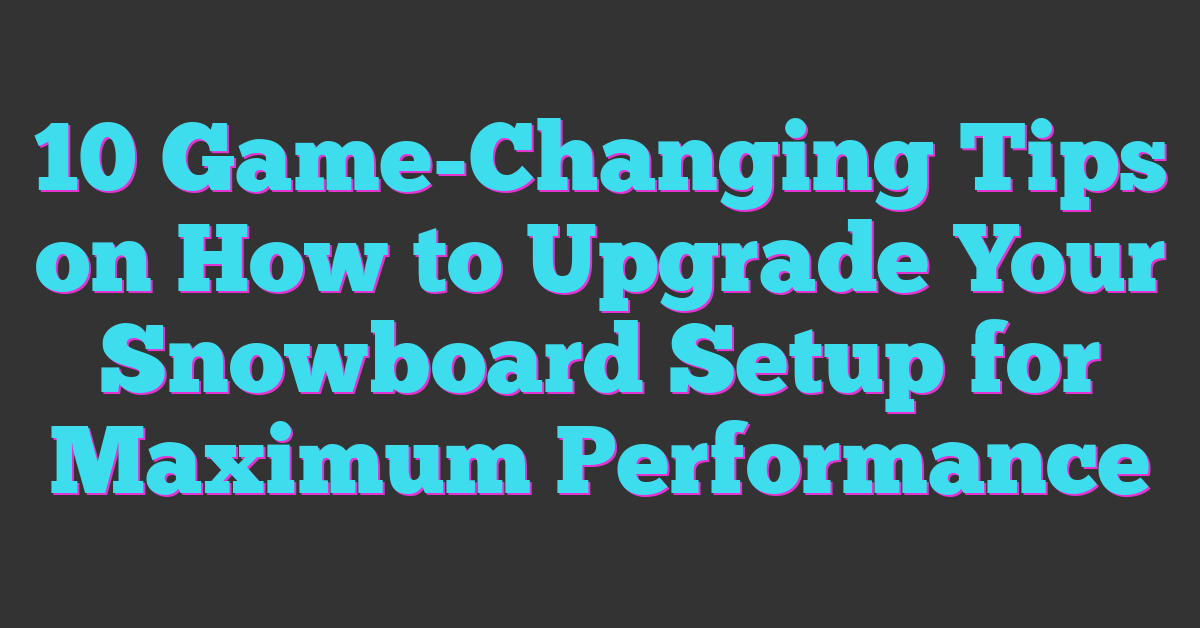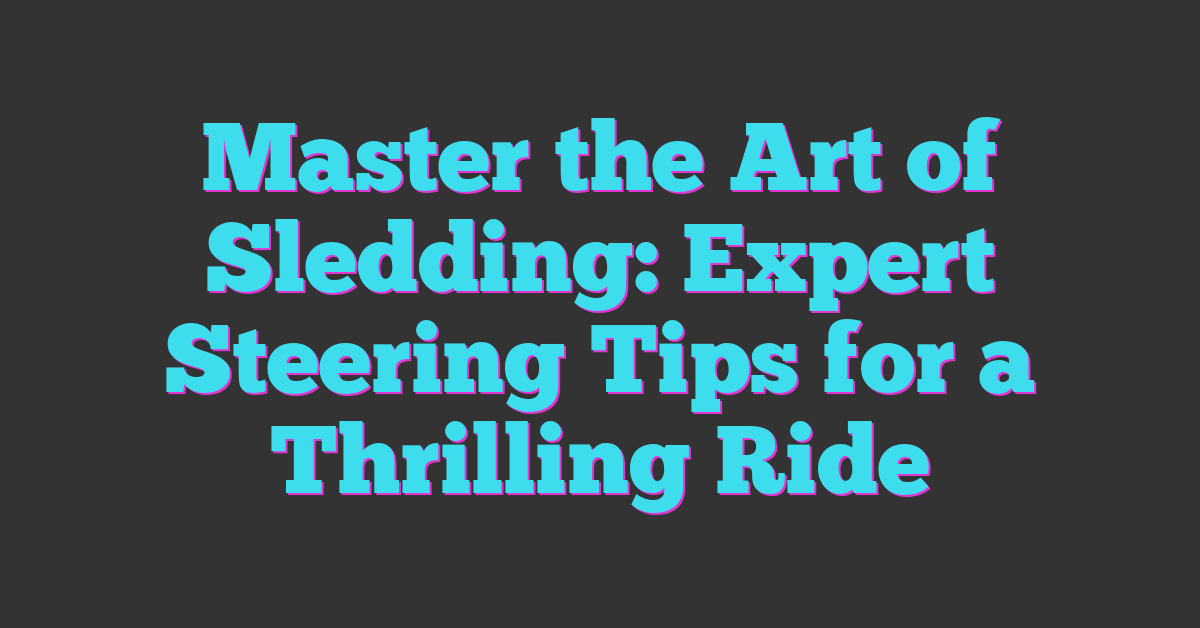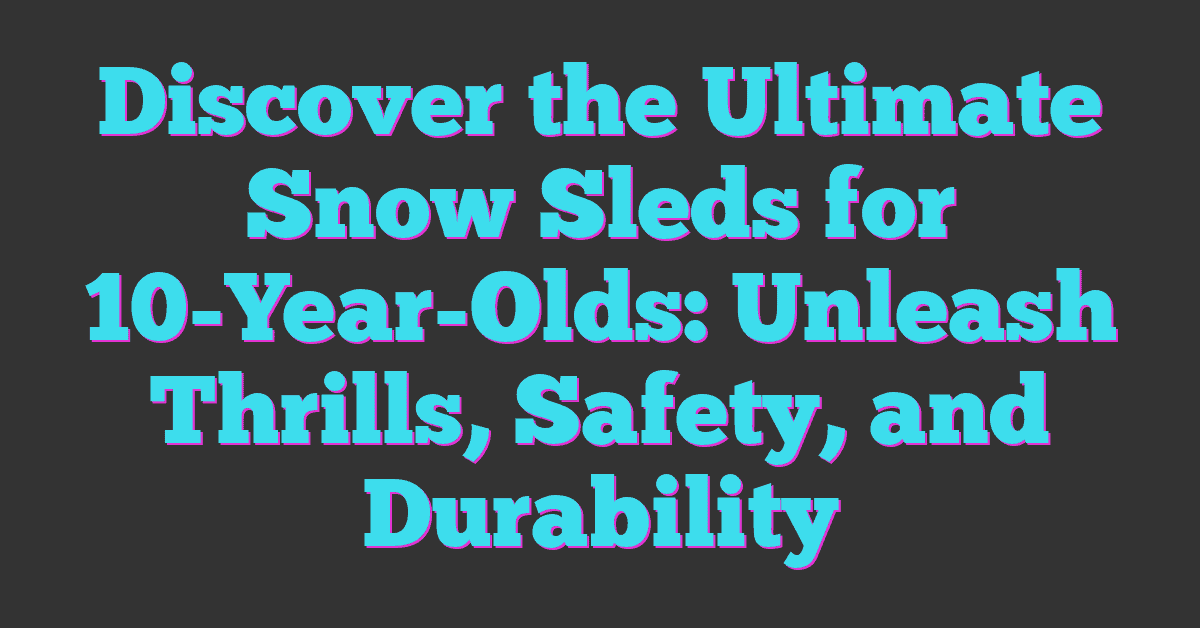Ready to take your snowboarding game to the next level? Upgrading your snowboard setup can make a world of difference in your performance and enjoyment on the slopes. Whether you’re a seasoned pro or just starting out, a few thoughtful tweaks can enhance your ride and boost your confidence.

Understanding Your Current Snowboard Setup
Understanding your current snowboard setup is essential before making any upgrades. You’ll enhance your riding experience by knowing what works well and what needs improvement.
Evaluate Your Snowboard Condition
Examine your snowboard for signs of wear. Look for dings, scratches, and delamination. Check the edges for rust, unevenness, or damage. A well-maintained board handles better and provides a smoother ride. Consider the base; if it’s worn down or has deep gouges, it may require a tune-up or replacement. Assessing your board’s flex and stiffness also matters, as these factors affect your overall performance. Adjust your setup according to your skill level and riding style to ensure optimal results on the mountain.
Assess Your Bindings and Boots
Inspect your bindings for any cracks or broken components. Check the straps for fraying and ensure the ratchets function smoothly. Properly adjusted bindings lead to better control and comfort. Examine the boots for any noticeable wear or loss of support. Make sure they’re snug but not too tight, as comfort significantly affects your ride. Test the flex of your boots; softer boots suit beginners and park riders, while stiffer options benefit advanced freeriders. Tailoring your bindings and boots to your preferences sets you up for success on the slopes.
Components to Consider Upgrading
Upgrading your snowboard setup involves several components that can greatly enhance your performance and comfort on the slopes. Focus on these key areas to maximize your experience.
Snowboard Types and Sizes
Choosing the right snowboard type and size directly affects your riding style. Consider your experience level and preferred terrain.
- All-Mountain Snowboards: Versatile and suitable for various conditions.
- Freestyle Snowboards: Perfect for park tricks and jumps.
- Freeride Snowboards: Designed for off-piste and powder conditions.
- Size: Match the board to your weight and height for optimal control. Boards typically range from 140 cm to 160 cm for all-mountain and freestyle, while freeride boards can go up to 180 cm for stability in powder.
Understanding these options helps you select a board that complements your riding style.
Bindings: Features and Compatibility
Bindings play a crucial role in your snowboard setup. When upgrading, focus on key features and compatibility.
- Flex: Choose bindings that match your board’s flex. Stiffer bindings provide better control, while softer ones allow for more comfort during tricks.
- Adjustability: Look for options that let you customize your stance, such as highback rotation and strap lengths.
- Compatibility: Ensure bindings fit your board’s mounting system. Many boards use either 4×4 or channel systems, so check compatibility before purchasing.
Selecting the right bindings enhances your connection to the board, improving your riding experience.
Boots: Comfort and Performance
Boots are arguably the most important component for a comfortable ride. Prioritize these features when upgrading.
- Fit: Choose boots that fit snugly without pressure points. Right size should allow for minimal heel lift.
- Flex Rating: Match the flex of your boots to your riding style. Softer boots provide comfort and flexibility, while stiffer boots offer more support and response.
- Lacing System: Look for options like traditional laces, speed laces, or BOA systems that can adjust easily on the slopes.
Comfortable and performance-oriented boots significantly impact your overall control and enjoyment while snowboarding.
Choosing the Right Upgrades
Choosing the right upgrades for your snowboard setup enhances performance and increases enjoyment on the slopes. Evaluating your current gear helps identify the best upgrades tailored to your riding style and preferences.
Materials and Technology Innovations
Composite materials enhance durability and performance. Look for boards featuring lightweight construction, like carbon fiber or bamboo, which provide improved responsiveness and flexibility.
Camber profiles significantly impact ride quality. Explore options like rocker or hybrid designs for ease of turn initiation and better powder performance. Each camber style caters to different riding conditions, so choose according to your typical terrain.
Advanced damping systems absorb vibrations, leading to a smoother ride. Upgrading to a board with enhanced damping techniques minimizes chatter at high speeds, improving stability and control.
Bindings equipped with shock-absorbing technology maximize comfort and reduce fatigue. Prioritize bindings with advanced cushioning features that cater to your riding style, whether you prefer jumping or carving.
Brand Recommendations and Reviews
Burton leads the industry with high-quality snowboards and bindings. Their reputation for innovation and reliable performance makes them a favorite among riders of all skill levels. Look for reviews that highlight specific models suited for your needs.
K2 offers excellent mid-range options with a good balance of performance and value. Check testimonials regarding their boards to find designs that cater to different styles, whether you’re freeriding or hitting the park.
Ride has gained a solid reputation for durable, performance-focused gear. Their products typically receive positive reviews for responsiveness and comfort, especially in their binding range.
Nitro provides a range of choices that appeal to both beginner and experienced riders. Their technology innovations, especially in flex and fit, garner favorable reviews from passionate snowboarders.
Explore community forums and gear review websites to compare user experiences. Real-life feedback can guide you toward upgrades that align with your riding style and desired performance enhancements.
Installation and Adjustment Tips
Upgrading your snowboard setup can be an exciting process. Knowing how to install and adjust your equipment properly enhances your overall experience on the slopes.
DIY Installation vs Professional Help
Installing snowboard components yourself empowers you to understand your gear better. It’s a rewarding experience, allowing for customization tailored to your preferences. Basic tools like a screwdriver, a ratchet set, and a measuring tape are all you require. Follow instructions or online tutorials for guidance. However, consider professional help if you face complex installations or uncertainties regarding your adjustments. Professional technicians offer expertise, ensuring safety and optimal performance, especially for advanced bindings or specialized setups.
Proper Adjustment for Optimal Performance
Adjusting your bindings and stance is vital for maximizing performance. Here are essential adjustments to consider:
- Binding Position: Align your bindings based on your riding style. For more freestyle tricks, a centered stance provides balance. For freeride, set the bindings slightly back for improved control.
- Binding Angle: Set your angles to match your riding preference. A duck stance (positive front angle and negative rear angle) enhances switch riding, while a more traditional forward stance suits all-mountain riding.
- Strap Tightness: Ensure your straps hold your boots snugly without excessive pressure. Adjustable straps help achieve the right fit, crucial for comfort and control during rides.
- Highback Angle: Adjust highback angles to support your riding style. An upright highback aids in precision for tricks, while a slight lean offers comfort for longer runs.
Maintenance of Your New Setup
Caring for your upgraded snowboard setup ensures peak performance and longevity. Routine maintenance keeps you shredding confidently all season long.
Regular Checks and Tune-Ups
Conduct regular checks on your snowboard setup for optimal performance. Inspect the base for scratches and gouges, as these can affect glide and speed. A stone grind or wax helps maintain a smooth surface. Check the edges for burrs; a gentle file or tune-up tool keeps them sharp for better control on ice.
Examine your bindings frequently. Make sure they’re tight and securely fastened. Adjust the highback to match your riding style and ensure optimal response. Don’t forget about boots; inspect them for wear and ensure the laces tie snugly for maximum support. A quick inspection before each ride guarantees you’re ready to tackle the slopes without worry.
Storing Your Equipment Properly
Store your snowboard setup correctly during off-seasons or warmer months to prevent damage. Keep your snowboard in a cool, dry place, away from direct sunlight and humidity. Avoid leaning your board against walls, as this can cause warping. Instead, store it flat or in a snowboard bag.
Remove bindings and clean them thoroughly before storage. Keep them in a separate section of your bag to avoid scratches. For boots, stuff them with newspaper or boot trees to maintain their shape and absorb moisture. Proper storage protects your investment and keeps your setup ready for action when winter returns.
Conclusion
Upgrading your snowboard setup can truly transform your time on the slopes. With the right adjustments and components tailored to your style and preferences, you’ll notice a significant boost in performance and enjoyment.
Remember to regularly maintain your gear to keep it in top shape. By taking care of your snowboard and staying informed about the latest innovations, you can ensure that every ride is a thrilling adventure.
So get out there and enjoy the snow with your upgraded setup. You deserve every moment of fun and excitement that comes with it!
















